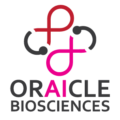Projects
 Identifying pre-malignant lesions is ultimately a pattern detection and pattern localization problem. This is where a well-designed, robustly tested and scientifically validated Artificial Intelligence (AI) algorithm can be a game-changer. If experts such as oral pathologists, dentists and cancer surgeons come together to collect, label and correctly classify hundreds of unique images of oral lesions using standardised protocols, these can be used to train the AI algorithm to do the job in an automated fashion for future images. Through the process of iterative testing and continual machine learning, created by machine learning scientists and guided by medical experts, a reliable and field-worthy screening tool is possible. Ultimately, this can be taken to a mobile device that can take images of the oral cavity at the POC as well as spit out (pun intended) a “red flag” for an expert evaluation if a pre-cancerous lesion is suspected. Such a patient, if a tobacco user, will also be referred to the tobacco control centre.
Identifying pre-malignant lesions is ultimately a pattern detection and pattern localization problem. This is where a well-designed, robustly tested and scientifically validated Artificial Intelligence (AI) algorithm can be a game-changer. If experts such as oral pathologists, dentists and cancer surgeons come together to collect, label and correctly classify hundreds of unique images of oral lesions using standardised protocols, these can be used to train the AI algorithm to do the job in an automated fashion for future images. Through the process of iterative testing and continual machine learning, created by machine learning scientists and guided by medical experts, a reliable and field-worthy screening tool is possible. Ultimately, this can be taken to a mobile device that can take images of the oral cavity at the POC as well as spit out (pun intended) a “red flag” for an expert evaluation if a pre-cancerous lesion is suspected. Such a patient, if a tobacco user, will also be referred to the tobacco control centre.

There are proteins that we have identified in the saliva that can be an indicator of current or potentially imminent oral pathologies. In the coming years, we shall be testing the specificity and sensitivity of these proteins through robust clinical studies. Once validated, a saliva-based rapid antigen test can be used in conjunction with other clinical features as a screening tool, especially at the point of care, for early screening and diagnosis. Our biomarkers, when converted to scalable and affordable non-invasive screening tool formats, have the potential to reduce the time to diagnosis of cancers and improve outcomes.
 Using a combination of standard microbiology approaches and molecular tools, the biogeography of the oral microbiome in a range of tobacco-associated clinical conditions, across variations in diet, lifestyle, associated risk factors, can be profiled.
This will serve as a baseline for screening and interventional tools in local populations
The progression of potentially malignant lesions to oral cancer is associated with an alteration in the microbiome, and levels of microbial metabolites.
Detection of these ‘signature’ markers in potentially malignant lesions could be leveraged as screening approaches. This would serve as a valuable addition to macroscopic (visual) screening for cancerous changes, and be less invasive as compared with routine biopsies.
Most importantly,identifying microbial changes early in cancer progression would provide the possibility of targeting the oral microbiome, an active interventional approach to preventing progression to oral cancer.
Using a combination of standard microbiology approaches and molecular tools, the biogeography of the oral microbiome in a range of tobacco-associated clinical conditions, across variations in diet, lifestyle, associated risk factors, can be profiled.
This will serve as a baseline for screening and interventional tools in local populations
The progression of potentially malignant lesions to oral cancer is associated with an alteration in the microbiome, and levels of microbial metabolites.
Detection of these ‘signature’ markers in potentially malignant lesions could be leveraged as screening approaches. This would serve as a valuable addition to macroscopic (visual) screening for cancerous changes, and be less invasive as compared with routine biopsies.
Most importantly,identifying microbial changes early in cancer progression would provide the possibility of targeting the oral microbiome, an active interventional approach to preventing progression to oral cancer.
At Oraicle we want to address the world’s oral cancer early screening problem as soon as possible. To develop our smartphone-based AI enabled tool, we need to acquire clinical images to standardised protocol- that can be labour intensive, costly and inefficient. We cannot wait for long! A bright team of MD-PhDs and IITians will be working with us on a solution to use available (and copyright-free) images from the internet, train and re-train smart machine learning algorithms with a human-in-the-loop from our expert annotation team, and increase the predictive power of our tool in development. Watch this space!

